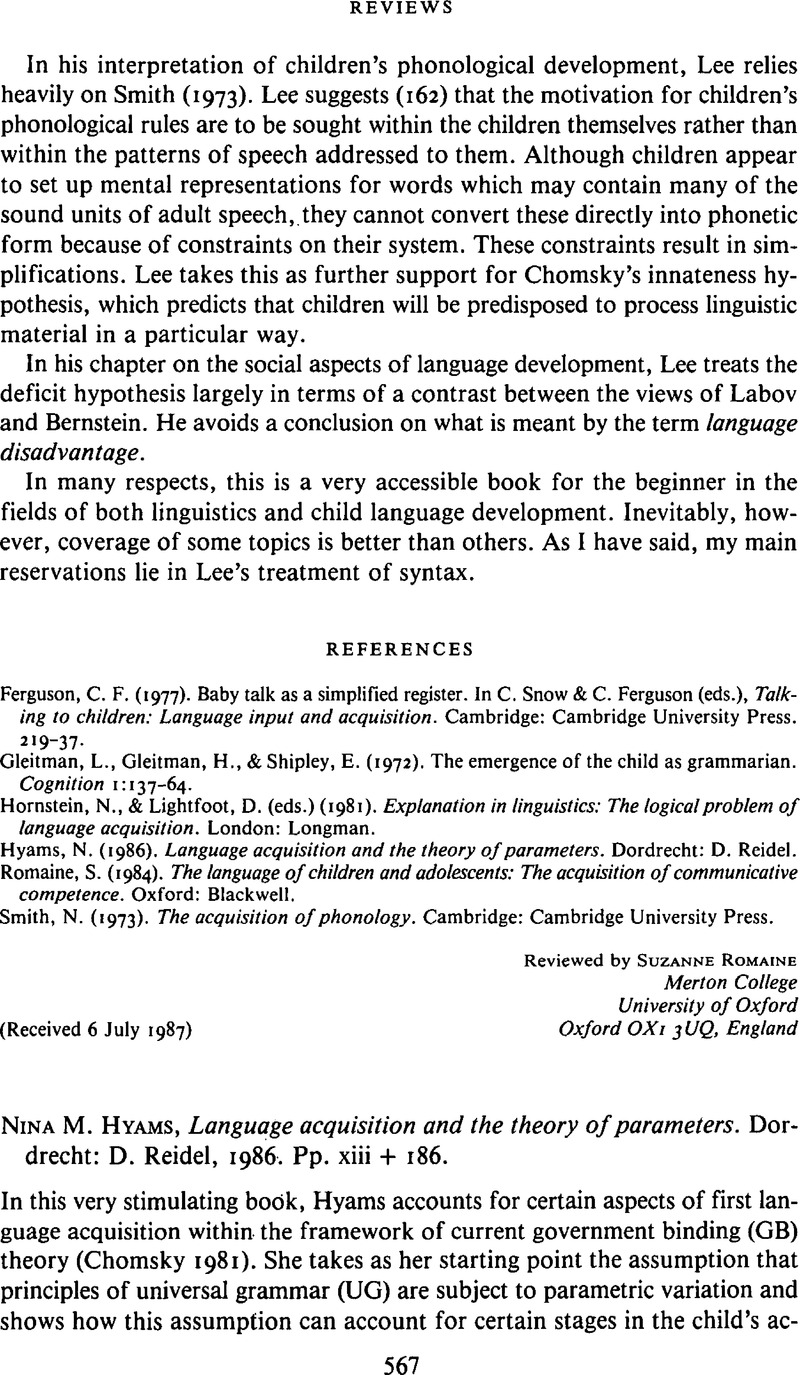No CrossRef data available.
Article contents
Nina M. Hyams, Language acquisition and the theory of parameters. Dordrecht: D. Reidel, 1986. Pp. xiii + 186.
Published online by Cambridge University Press: 18 December 2008
Abstract
An abstract is not available for this content so a preview has been provided. Please use the Get access link above for information on how to access this content.

- Type
- Book Review
- Information
- Copyright
- Copyright © Cambridge University Press 1989
References
REFERENCES
Berwick, R. (1985). The acquisition of syntactic knowledge. Cambridge, Mass.: MIT Press.CrossRefGoogle Scholar
Clahsen, H. (1986). Verb inflection in German child language: Acquisition of agreement markings and the functions they encode. Linguistics 24:79–121.CrossRefGoogle Scholar
Guilfoyle, E. (1984). The acquisition of tense and the emergence of lexical subjects in child grammars of English. McCill Working Papers in Linguistics 2(1):20–30.Google Scholar
Lebeaux, D. (1987). Comments on Hyams. In Roeper, T. & Williams, E. (eds.), Parameter setling. Dordrecht: Foris. 23–39.CrossRefGoogle Scholar
Newport, E., Gleitman, L., & Gleitman, H. (1977). Mother, I'd rather do it myself: Some effects and non-effects of maternal speech style. In Snow, C. & Ferguson, C. (eds.), Talking to children: Language input and acquisition. Cambridge: Cambridge University Press.Google Scholar
Rizzi, L. (1986). Null objects in Italian and the theory of pro. Linguistic Inquiry 17:501–57.Google Scholar
White, L. (1985). The “prodrop” parameter in adult second language acquisition. Language Learning 35:47–62.CrossRefGoogle Scholar




